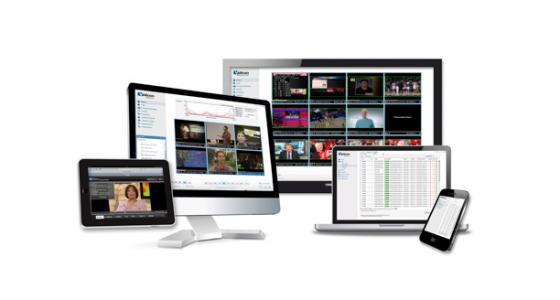For decades, broadcast stations focused their monitoring efforts on the content they aired via conventional distribution chains. More recently, however, as the Internet has emerged as an increasingly viable and attractive means of delivering content, many broadcasters have seized the opportunity to extend their reach to a much greater geographic area and a much larger potential audience.
While IP-based content delivery gives broadcasters the chance to introduce revenue-generating over-the-top (OTT) and Internet streaming services, it also demands a new approach to monitoring and ensuring quality of experience (QoE) across the broadcaster’s full service portfolio. Along with the significant new business opportunity presented by OTT come significant new challenges in monitoring.
The launch of OTT services yields an immediate and significant increase in the number of portals and devices on which audiences can consume content. The astounding array of viewing devices — computers, tablets, and smartphones — and associated “flavors” of content they require can make it difficult for operations of any size to assure the best possible experience. Given the highly competitive media marketplace today, it is critical that broadcasters have the means to monitor their OTT services and preserve the quality and value of the content they provide. At the same time, still-difficult economic conditions in and beyond the industry make it necessary to adopt affordable and highly efficient solutions for monitoring OTT services.
Though a number of factors, such as the limitations of supporting networks and devices which are simply beyond the broadcaster’s control, it is possible for broadcasters to implement an effective monitoring model that addresses their OTT services. Broadcasters are finding that the simplest and least expensive way of establishing OTT service monitoring is through the extension of their existing monitoring model and infrastructure.
While monitoring of linear broadcasts typically has required examination — monitoring and recording — of only a single output, the monitoring of Internet-delivered content demands continual evaluation of multiple new outputs, each of which may be distributed in dozens of different versions. When content is being delivered via more than one content delivery network (CDN), then the broadcaster may also need to create additional versions tailored to each CDN’s preferred profile.
Rather than attempt to monitor all of these outputs and every version of content all of the time, broadcasters are monitoring selectively at ingest, encode, packaging, delivery, and the signal received by the viewer. (This last is preformed, by necessity, in a controlled environment, so it cannot account for the influence of ISP service quality.)
At ingest, this means moving from examination of video itself to examination of data about that video. By looking at bit rates, syntax, reference timestamps, and alignment of each of the files, the broadcaster can get a pretty good sense of a given file’s integrity. More important, this process can be automated and accelerated across a large number of files. The broadcaster can confirm correct packaging of files for the appropriate CDN(s) and platforms can be confirmed relatively simply by “accepting” those files (and the corresponding manifest) in the same way that a CDN would.
Looking beyond the CDN, the broadcaster can actively sample a variety of its outputs — with a focus on the most popular platforms and formats — to get a sense of the service quality being experienced by the majority of its OTT customers. This method can be used in combination with “round robin” emulation in which the broadcaster alternatively examines the lower, middle, and upper bit rates across Apple® HLS, Microsoft® Smooth Streaming, and Adobe® HDS formats, all the while monitoring content for quality.
This two-pronged approach to monitoring OTT service quality allows the broadcaster to detect issues that threaten the viewing experience and determine whether the cause stems from its own activities, or whether they are a consequence of factors that are further down the distribution chain and beyond control. Now that descriptive video and captioning are required in Internet-delivered versions of broadcast content, this expansion of monitoring also helps broadcasters to ensure that all their services are compliant with the latest FCC requirements. When equipped to monitor both quality and compliance up to and even beyond the CDN, broadcasters are well-positioned to capitalize on the many benefits of IP-based content delivery.
Thought Gallery Channel:
Thought Leaders
